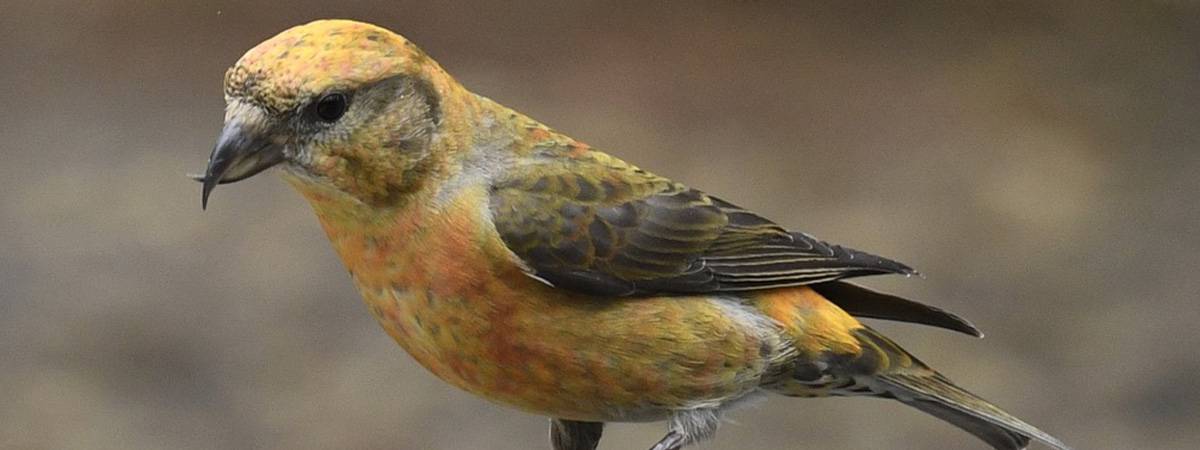
One of Our Coolest Common Finches
Red Crossbill (Loxia curvirostra)
By Sevilla Rhoads
While I watch and photograph Red Crossbills in Sunriver, people passing by often stop to ask, “What is wrong with those birds? Are they deformed?” I love these questions because they provide an excuse to share my excitement about one of our coolest common finches.
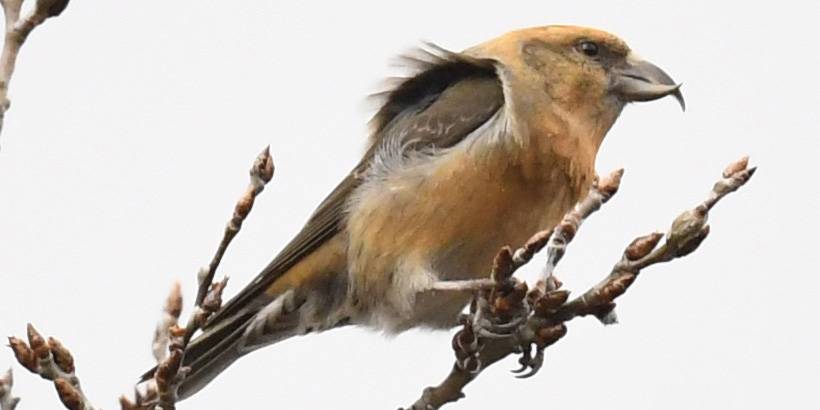 With their groovy tie-dye plumages, Red Crossbills all have bizarre-looking crossed beaks that are specially adapted for the types of pine cones they eat. These crossed bills are excellent utensils for prying out delicious pine seeds.
With their groovy tie-dye plumages, Red Crossbills all have bizarre-looking crossed beaks that are specially adapted for the types of pine cones they eat. These crossed bills are excellent utensils for prying out delicious pine seeds.
Look at the base of any Sunriver pine, and you see the remains of cones, often resembling tossed apple cores, torn apart by squirrels. Crossbills have perfectly adapted beaks allowing them to far more gracefully pluck out the cleverly protected seeds from between the cone scales.
The crossed bills vary in size and direction – some cross to the right and some to the left. You can tell which direction the beak crosses from a distance by watching how the bird turns its head when feeding.
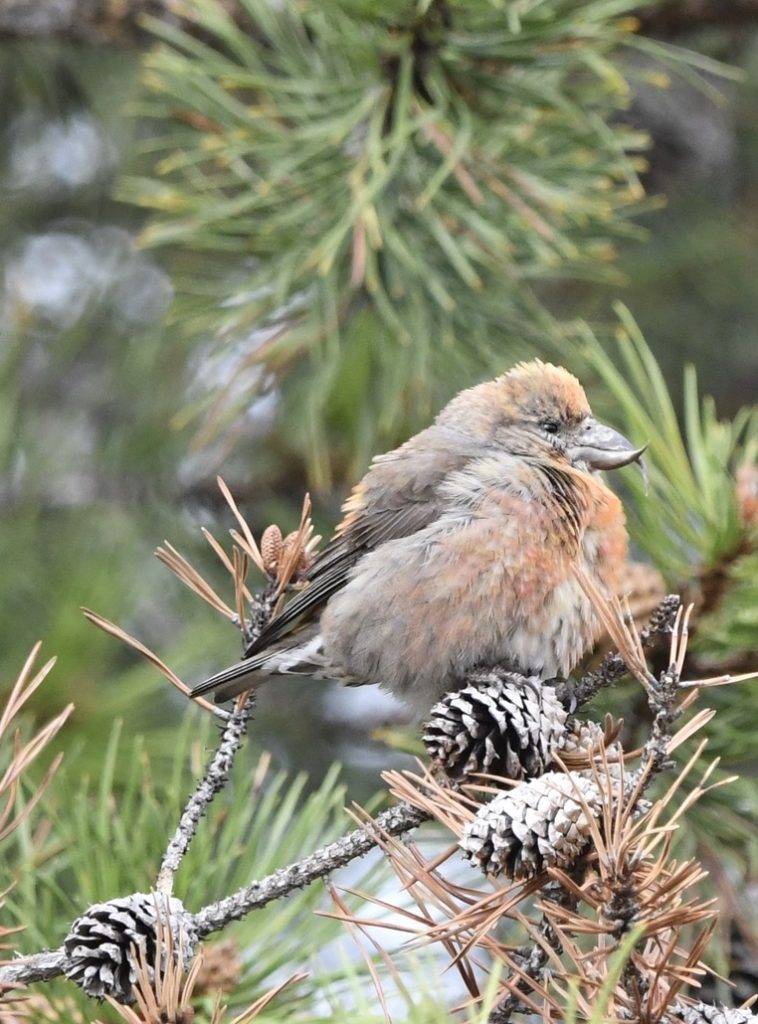 One reason to never tire of Crossbill-watching is their wide range of fashion and calls. Most guidebook illustrations cannot do justice for Crossbill looks where they only show two or three plumages. In Sunriver, Crossbills seem to have mastered every variation of the rainbow colors above the blue line!
One reason to never tire of Crossbill-watching is their wide range of fashion and calls. Most guidebook illustrations cannot do justice for Crossbill looks where they only show two or three plumages. In Sunriver, Crossbills seem to have mastered every variation of the rainbow colors above the blue line!
Crossbills also have many different calls and songs, which are best learned by pausing to listen when you see the birds. Audio references may not have local variations or include all the different song types, so do not rule out a Crossbill identification just because it does not exactly match the sample on your bird call App.
If you notice such a distinct difference between some of the Crossbills that you wonder how they could be the same species, you are not alone in your musings. Ornithologists actively debate whether Red Crossbills should be divided into different species. Currently, most experts separate Red Crossbills into nine types.
If Charles Darwin had lived in Sunriver, I suspect he would have developed his evolution theory from studying Crossbills. Somewhat like Galapagos Tortoises, Crossbills have adapted their bills to the different types of cones in the places they feed.
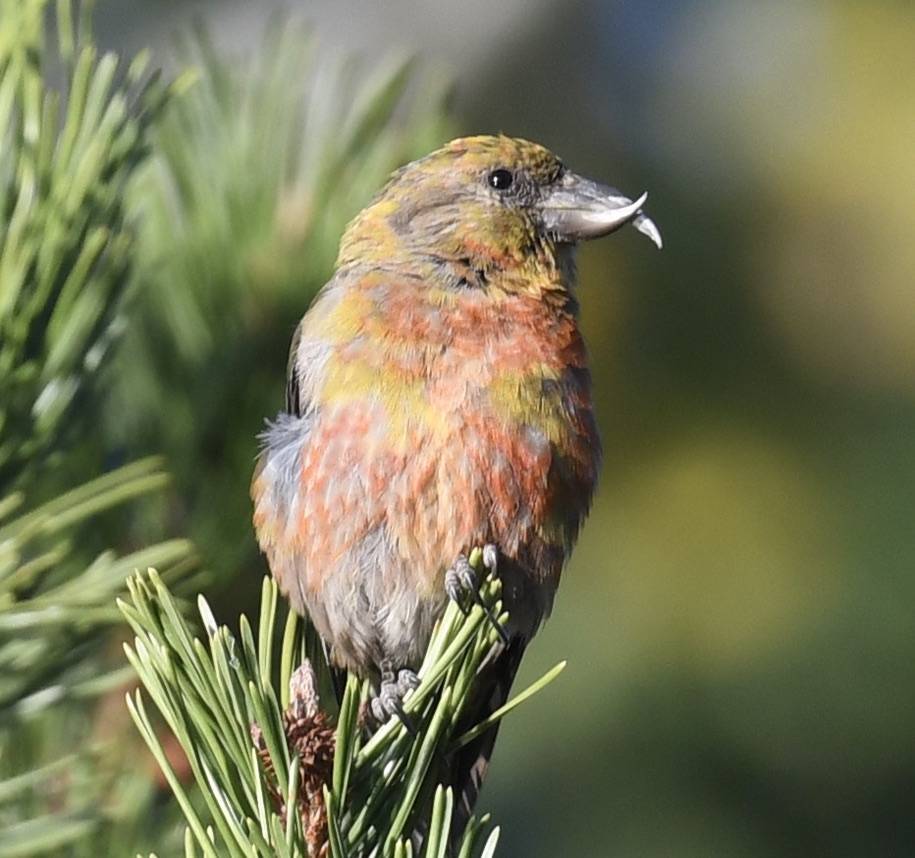
If you are interested in cutting-edge evolutionary science, Crossbills might be your thing because researchers, even citizen scientists, are actively discovering new types and species. As recently as 2017, Idaho’s Cassia Crossbill (Loxia sinesciurus) was declared a new species. https://www.allaboutbirds.org/guide/Cassia_Crossbill/overview. The Cassia has a specialized beak for the extremely tough Lodgepole Pine cones in Southern Idaho. Other Red Crossbill types cannot open these particular cones, and the Cassia’s bill is now ill-suited to any other kind of pine tree. The word sinesciurus means ‘without squirrels’ because even those crafty rodents cannot tear apart the Cassia’s preferred cones.
The Cassia is a great example of a creature evolving to take advantage of a unique food source in an ecological niche. Sadly, some climate change scientists think Southern Idaho will lose all its unique Lodgepole Pines, forcing the Cassia into extinction.

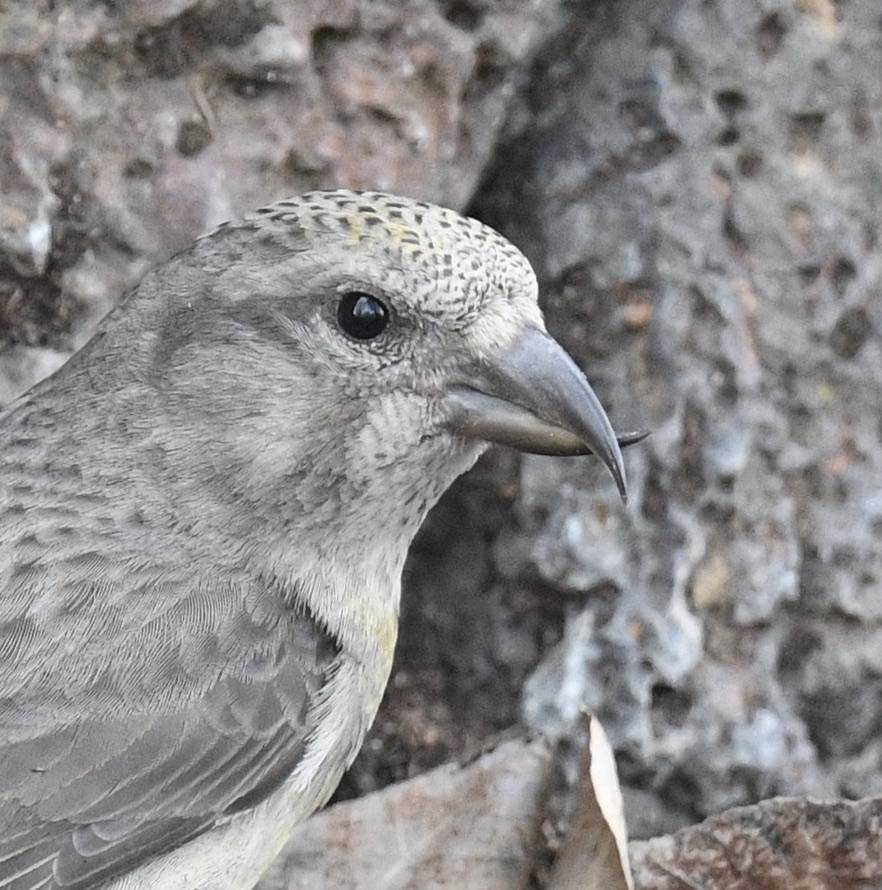
Watching the Red Crossbills of Sunriver, we notice they eat a broader diet than pine cones. We recently found one creatively using its unique bill shape to pry insects out the Sunriver Library wall, and we often see them feeding on the buds of birches. Maybe someone will discover a Crossbill species specially adapted to life on the Upper Deschutes one day?
Many Red Crossbill types are nomadic – they are not residents in any one place but rather travel great distances in search of food. It is not clear if Sunriver has any resident Red Crossbill types or whether the ones we see are nomads passing through. The Crossbills we see may have visited places as far away as New England. Red Crossbill types 2 (Ponderosa loving) and 5 (Lodgepole loving) are often reported in Oregon but have also been seen across the country as far east as New Hampshire.
If you see a Crossbill with white wing bars, it could be the rare White-winged Crossbill infrequently seen in Central Oregon during the winter at higher elevations. https://www.allaboutbirds.org/guide/White-winged_Crossbill/id.
If you love our Crossbills, you may be pleased to know there is an informal name for Crossbill fans: loxiafiles! As a loxiafile, you could get seriously bird-geeky by identifying the different types by their calls and habitats.
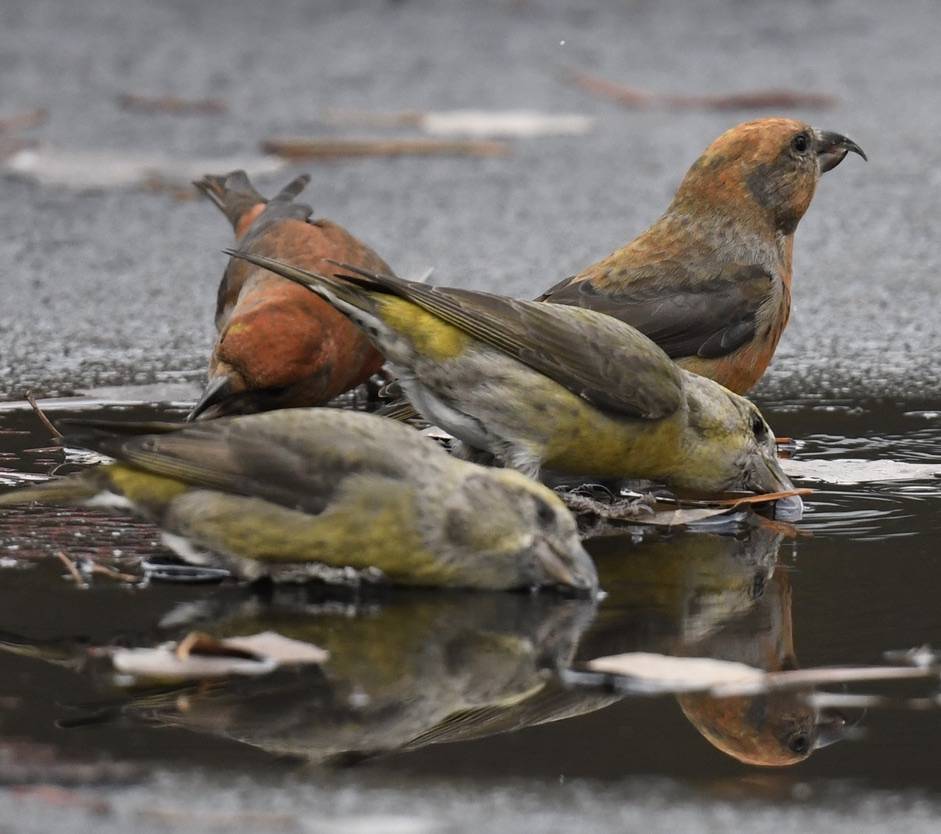
However, most of us can’t tell one Crossbill type or species from another – and we enjoy them just as much as the serious loxiafiles. You don’t have to be a scientist to marvel at how their beaks evolved so precisely to fit specific types of cones. You certainly don’t have to become an official loxiafile to delight at a flock of multi-colored, chatty Crossbills tilting their heads sideways to scoop up grit in the Nature Center parking lot.
Another benefit to having Crossbills around Sunriver is the chance to see cute fledglings, even on a snowy winter day. In this area, young Crossbills can emerge even sooner than owlets. It is hard not to admire those hardy Crossbill parents who kept their eggs and chicks warm during our freezing storms and now are trying to feed their growing fledglings during adverse weather and forest-fuel reduction season. If you miss the spring crop of fluffed-up juveniles, you will get another chance to spot them in late summer because Crossbills can have another brood to coincide with cones that ripen in the early autumn.
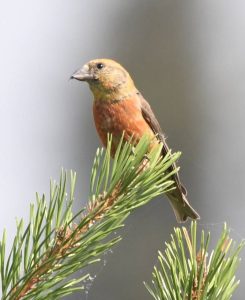
Identification Tips
Red Crossbills are a somewhat stocky bird, sized between a sparrow and a Robin. They come in many colors ranging from bright reds (mature males), oranges, yellows, greens, and grays with differing mottled versions of all those colors. Look closely at the bill, which is always crossed regardless of age or color variation.
In Sunriver, you might find this species at any time of year. They are often in flocks or pairs flying around the tops of pine trees. However, they do come down for salt, grit, and water in puddles or at the edges of waterways. They also feed on the spring buds of birches and other trees and can be found foraging for insects on walls, fences, or any surface with crevices and cracks.
They tend to call a lot when flying together, so learning their local sounds helps you locate Crossbills.
For more information and call examples: https://www.allaboutbirds.org/guide/Red_Crossbill/id.
For type details see: https://ebird.org/news/recrtype/
